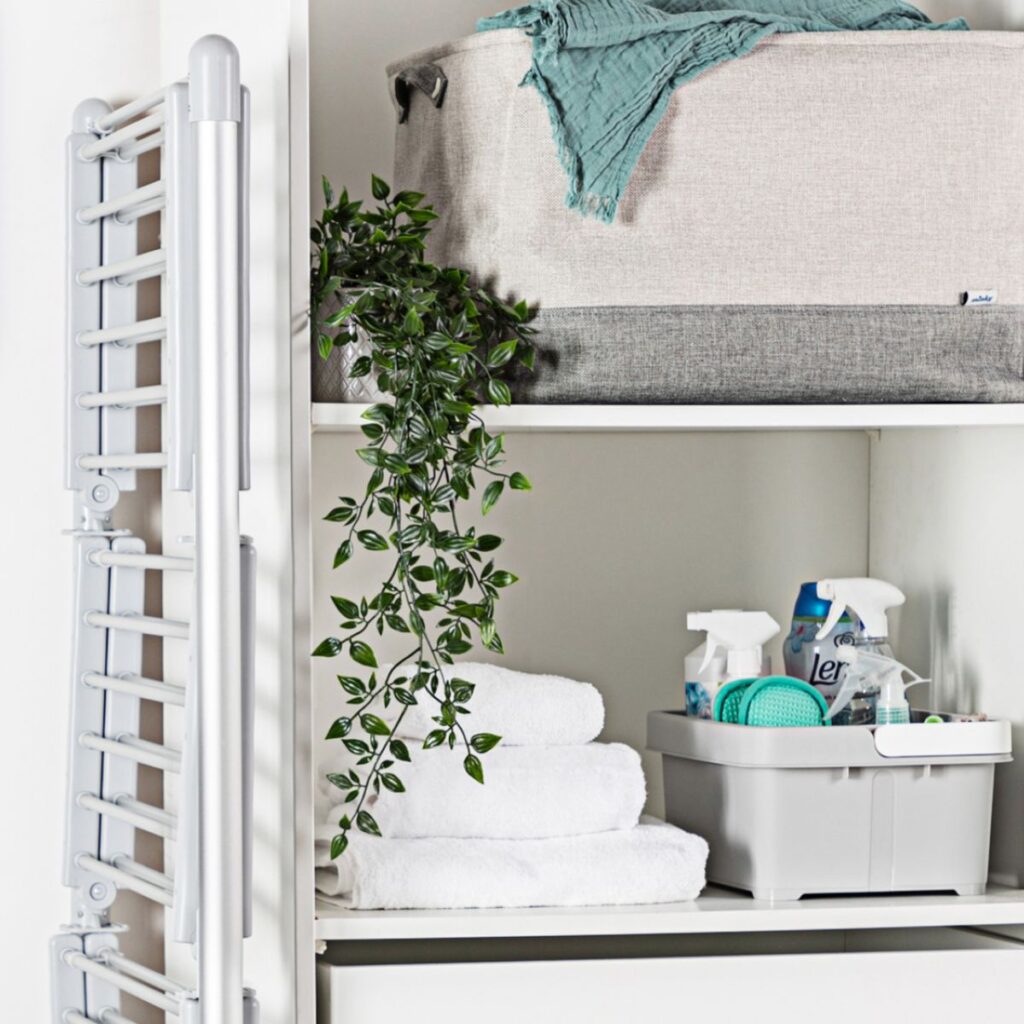If you own a heated airer then you’re probably already aware that it acts as a saviour every winter. But even the best heated airers need to be maintained, so checking yours is safe to use is vital before you get your clothes on the rack this winter.
Poor weather conditions and cold temperatures making drying clothes quickly in winter a real slog. So, inevitably your heated airer will be switched on far more than in the summer months.
AT Ideal home, we swear by heated airers to dry clothes quickly and efficiently, but to ensure you don’t fall foul to a big heated airer mistakes there are a few things to consider the next time you go to switch it on. Here’s how you can check if your heated airer is safe to use.
Heated airer safety checks
‘Before using a heated airer it’s important to check it over for damage, even if it’s brand new. To do this ensure that you look closely at the wires and connectors to rule out any electrical faults,’ says Nicholas Auckland, heating expert at Trade Radiators.
‘In addition, it’s important to check the structure of the airer to ensure that the elements of the frame are in good condition and show no signs of cracks and warping.
‘To be on the safe side, always turn your heated airer on for a substantial amount of time before using it and ensure that it’s free from dust and dirt.’
Shu Saito, heating expert and CEO of All Filters LLC, further recommends checking the plug of your airer.
‘Generally, the major causes of electrical hazards, which include short circuits or even fire risks, result from damaged insulation. Take a closer look at the plug and socket area to ensure a good, secure fit without signs of scorching or discoloration indicative of overheating,’ he says.
However, there are some less visible risks of damage that you should keep in mind.
‘If you happen to smell a burning plastic smell-on your airer when turned on, or if an airer buzzes or crackles, these are just some signs of an internal electrical fault,’ says Shu.
‘The most masked danger can sometimes be overheating, especially in the event that things like the thermostat or safety features are not working right.
‘My general advice is always to check the frame itself for any hot spots, as uneven heating could indicate some defect.
‘Lastly, make sure that there is good ventilation around the airer to avoid overheating and also keep it away from damp areas, to avoid electrical faults due to moisture.’
There isn’t a set time frame for when you should replace your airer, but If you notice any signs of damage or electrical faults, it is time to get a new one
Why is it important to check my heated airer?
Keeping your airer in top condition not only makes it run more efficiently, but helps keep you safe too.
‘Heated airers rely on electrical elements in order to dry clothing, however, if these elements are old or faulty it can be a huge fire risk,’ says Nicholas.
‘A faulty heating element can cause overheating which will not only burn and damage your clothing, but potentially result in a fire.
‘This is a huge risk especially when considering that many people leave their heated airers turned on overnight or when out of the house
‘Due to the fire risk associated with heated airers it’s important that homeowners are made aware of how to properly use them.
‘Placing a heated airer in a cramped room with little airflow can raise their fire risk, poor ventilation may cause overheating which can therefore result in a fire.
‘For this reason, heated airers should always be placed in open rooms with sufficient ventilation.
‘In addition, using heated airers regularly can increase the humidity of a room, this has the potential to result in condensation which can cause the formation of mould and mildew in your home. Over exposure to mould can result in significant health effects such as lung problems, coughing and wheezing.’
What to buy
If it’s time to say good bye to your old heated airer, these are a few of Ideal Home‘s top rated heated airers.
Jml Dribuddi Heated Indoor Airer
Ideal Home‘s team of reviewers rated this airer the best overall because of it’s super fast drying time – expect your clothes to be ready to wear in under three hours.
Minky Suredri 4 Tier Heated Clothes Airer
Out of the airer’s we’ve tested this one had the largest capacity, making it a fanastic choice for families. It even holds up to 20kg of washing!
Status Heated Clothes Airer
Out of the airers we tested we found this heated airer to be the best affordable option. Drying up to 15kg of washing it’s still effective for larger loads.
Your heated airer is likely to be a home saviour this winter – so give it some extra TLC before you switch it on.
Read the full article here
